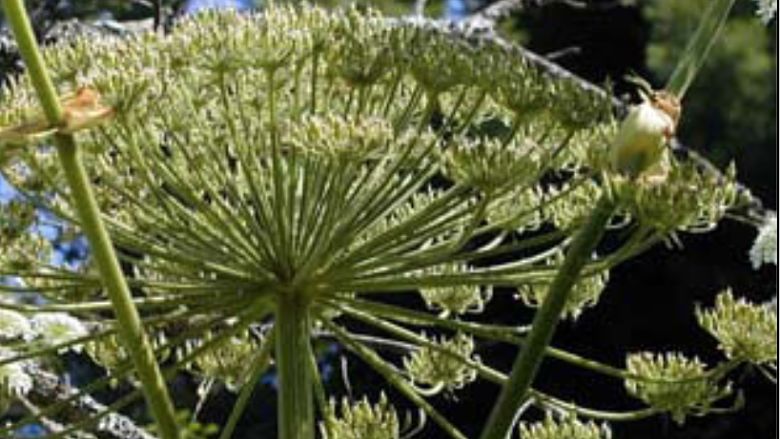
U.S. Department of Agriculture
A Giant Hogweed is a toxic weed that originated in Asia, but has been spotted in the United States since 1917. It is believed that “birds and waterways [carrying] seeds, which can grow up to 10 years once they’re dropped off,” were responsible for the spreading of the Giant Hogweed, according to CBS News. These days, the Giant Hogweed has been identified in New York, Pennsylvania, Ohio, Maryland, Oregon, Washington, Michigan, Virginia, Vermont, New Hampshire, and Maine.
The plant’s scientific name is Heracleum mantegazzianum Sommier & Levier. It is more commonly known as a Giant hogweed and it is sometimes called a cartwheel-flower.
Although the plant may look pretty with its white flowers, it’s actually extremely dangerous. According to the U.S. Department of Agriculture, the plant “produces toxic sap that can cause skin irritation and blindness.” The sap of the Giant Hogweed contains toxic chemicals called photosensitizing furanocoumarins.
“The light-sensitive skin reaction causes dark painful blisters that form within 48 hours, and result in scars that can last anywhere from a few months to six years. Touching giant hogweed can also cause long-term sunlight sensitivity, and blindness if sap gets into a person’s eye,” reports CBS News.
The Giant Hogweed is part of the carrot family. It can grow over 14 feet tall, and its thick leaves can span five feet wide. CBS News describes the plant as having “large clusters of white flowers [that grace] the top … in an umbrella pattern. Its stems are green with purple blotches and white hairs.”
According to WTVR, “the plant can easily be mistaken for other harmless plants, such as Queen Anne’s Lace and Cow Parsnip.”
A recent report out of Clarke County, Virginia, reveals that a 17-year-old landscaper by the name of Alex Childress is suffering from severe burns after coming in contact with a Giant Hogweed.
“Alex continued working throughout the day once he got it on his face. When he got home he got into the shower and the skin on his face was basically peeling away and peeling off,” Childress’ father, Justin, told WTVR. “It’s a traumatic experience, but Alex is a tough kid. I just don’t say it because he’s my kid, but he’s one of the toughest kids that I’ve ever seen,” Justin Childress continued.
For more information on the Giant Hogweed, check out the video below.
If you find a Giant Hogweed near your home, it’s important that you do not use a weed-whacker to remove it. Doing so could “cause the plant’s sap to splatter and spread quickly. Eradication should be done by physical removal or using herbicides such as glyphosate or triclopyr,” WTVR reports.